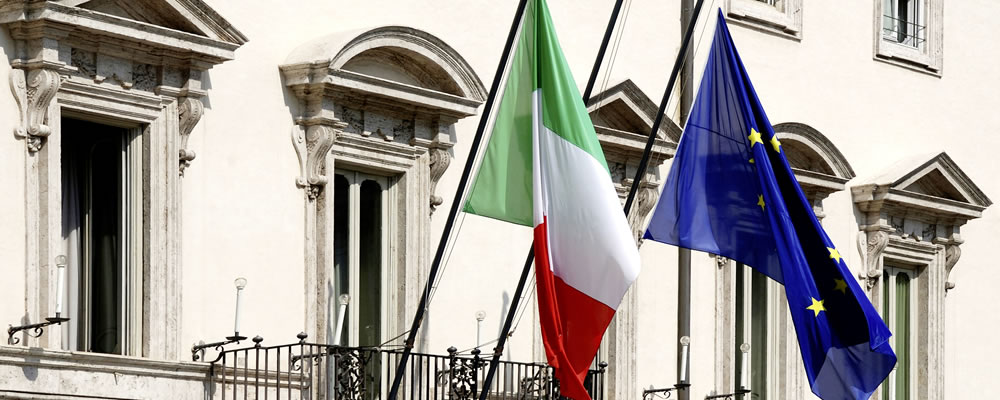The Euro (EUR) has continued to trade positively against the Australian Dollar (AUD) on Monday afternoon, ahead of a busy week.
The main event will be Thursday afternoon’s meeting of European Central Bank (ECB) officials, which could boost the Euro.
ECB policymakers might hint at tighter monetary policy over the rest of 2018, which could eventually lead to a coveted interest rate hike.
Mario Draghi, President of the ECB, has repeatedly stated that higher interest rates aren’t likely until monetary policy tightens.
As such, the Euro might appreciate by association if Thursday’s ECB meeting brings hints for reduced bond-buying.
(Last updated 11th June, 2018)
Reassuring Speech from Italian Finance Minister Triggers EUR/AUD Exchange Rate Rise
The Euro (EUR) has risen the Australian Dollar (AUD) today, thanks to supportive developments in Italy.
This result has put the EUR/AUD exchange rate near its best level since late-May and the single currency has also appreciated elsewhere.
Today’s good news is that Italian Finance Minister Giovanni Tria has rejected the suggestion that Italy could leave the Eurozone in the future.
There were previously concerns that the anti-establishment government would push for withdrawal from the Euro, but Mr Tria has largely reassured traders.
Mr Tria has additionally supported the Euro by suggesting that the new coalition government won’t go on a spending spree.
This was another point of concern for Eurozone members and Euro traders, who were worried that there could be destabilisation of the single currency bloc.
Disappointing Italian Industrial Data Limits Today’s EUR/AUD Exchange Rate Gains
Although news of continued Italian membership of the Eurozone has been supportive today, the nation’s industrial output readings have proven less helpful.
April’s readings have shown slower-than-expected growth for the annual figure, along with a greater-than-expected contraction for the month-on-month printing.
Over 2017 and 2018, monthly industrial production levels have fluctuated wildly, so the latest readings have chipped away at the EUR/AUD exchange rate.
Shortage of AU Economic News Leaves Australian Dollar to Euro (AUD/EUR) Exchange Rate Down
There has been little direct influence on the Australian Dollar (AUD) today, which has led to the currency falling against the Euro (EUR).
Despite this pairing-specific weakness, the Australian Dollar has otherwise appreciated against the Canadian Dollar (CAD) and US Dollar (USD).
In domestic news, it is hoped that an expansive exhibition on ancient Egypt could bring AU$100m to the economy in tourist revenue when the artifacts arrive in 2021.
Euro to Australian Dollar Exchange Rate Forecast: Are EUR/AUD Losses ahead on Eurozone Industrial Data?
Looking ahead, the Euro (EUR) could shift against the Australian Dollar (AUD) in the near-term when Eurozone employment and industrial data is released.
These readings will respectively cover Q1 2018 and April. Higher year-on-year employment is forecast, but slowing industrial output is also predicted.
As such, the EUR/AUD exchange rate could decline on the news, especially if levels of employment growth actually slow instead of rising as forecast.
Employment rate figures will also factor into near-term Australian Dollar movement, with May’s jobs market stats due for release early on Tuesday.
These readings are predicted to show a reduction in the unemployment rate from 5.6% to 5.5%; this could boost the AUD.
As well as being good news in any respect, lower unemployment could be especially supportive for AUD exchange rates because of economic implications.
A falling unemployment rate increases the chances of faster wage growth, which in turn means higher odds of a Reserve Bank of Australia (RBA) interest rate hike.



